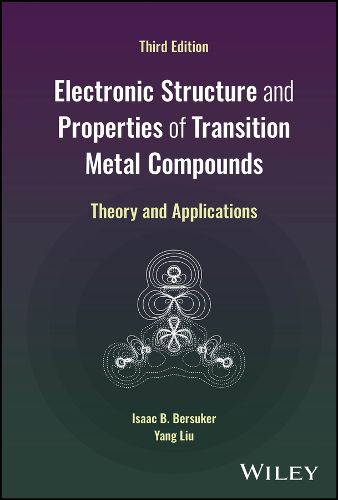Readings Newsletter
Become a Readings Member to make your shopping experience even easier.
Sign in or sign up for free!
You’re not far away from qualifying for FREE standard shipping within Australia
You’ve qualified for FREE standard shipping within Australia
The cart is loading…






Presents the latest achievements in the theory of electronic structure and properties of transition metal coordination compounds with applications to a range of chemical and physical problems
Electronic Structure and Properties of Transition Metal Compounds offers a detailed and authoritative account of the theory of electronic structure and the properties of transition metal compounds with applications to various chemical and physical problems.
The fully updated third edition incorporates recent developments and methods in the field, including new coverage of methods of ab initio calculations of the electronic structure of coordination compounds and the application of vibronic coupling and the Jahn-Teller effect to solve coordination chemistry problems. Revised chapters provide up-to-date views on reactivity, chemical activation, and catalysis. New and expanded questions, exercises, and problems in each chapter are supported by new problem-solving examples, illustrations, graphic presentations, and references.
Designed to be intelligible to advanced students, researchers, and instructors, Electronic Structure and Properties of Transition Metal Compounds:
Provides thorough coverage of the theory underlying the electronic structure and properties of transition metal compounds, including the physical methods of their investigation Helps readers understand the origin of observable properties in transition metal compounds and choose a suitable method of their investigation Contains numerous problems with solutions and illustrative examples demonstrating the application of the theory to solving specific chemical and physical problems Presents a generalized view of the modern state of the field, beginning from the main ideas of quantum chemistry and atomic states to applications to various chemical and physical problems Features novel problems never fully considered in books on coordination chemistry, such as relativistic effects in bonding, optical band shapes, and electron transfer in mixed-valence compounds
Electronic Structure and Properties of Transition Metal Compounds: Theory and Applications, Third Edition is an excellent textbook for graduate and advanced undergraduate chemistry students, as well as a useful reference for inorganic, bioinorganic, coordination, organometallic, and physical chemists and industrial and academic researchers working in catalysis, organic synthesis, materials science, and physical methods of investigation.
$9.00 standard shipping within Australia
FREE standard shipping within Australia for orders over $100.00
Express & International shipping calculated at checkout
Presents the latest achievements in the theory of electronic structure and properties of transition metal coordination compounds with applications to a range of chemical and physical problems
Electronic Structure and Properties of Transition Metal Compounds offers a detailed and authoritative account of the theory of electronic structure and the properties of transition metal compounds with applications to various chemical and physical problems.
The fully updated third edition incorporates recent developments and methods in the field, including new coverage of methods of ab initio calculations of the electronic structure of coordination compounds and the application of vibronic coupling and the Jahn-Teller effect to solve coordination chemistry problems. Revised chapters provide up-to-date views on reactivity, chemical activation, and catalysis. New and expanded questions, exercises, and problems in each chapter are supported by new problem-solving examples, illustrations, graphic presentations, and references.
Designed to be intelligible to advanced students, researchers, and instructors, Electronic Structure and Properties of Transition Metal Compounds:
Provides thorough coverage of the theory underlying the electronic structure and properties of transition metal compounds, including the physical methods of their investigation Helps readers understand the origin of observable properties in transition metal compounds and choose a suitable method of their investigation Contains numerous problems with solutions and illustrative examples demonstrating the application of the theory to solving specific chemical and physical problems Presents a generalized view of the modern state of the field, beginning from the main ideas of quantum chemistry and atomic states to applications to various chemical and physical problems Features novel problems never fully considered in books on coordination chemistry, such as relativistic effects in bonding, optical band shapes, and electron transfer in mixed-valence compounds
Electronic Structure and Properties of Transition Metal Compounds: Theory and Applications, Third Edition is an excellent textbook for graduate and advanced undergraduate chemistry students, as well as a useful reference for inorganic, bioinorganic, coordination, organometallic, and physical chemists and industrial and academic researchers working in catalysis, organic synthesis, materials science, and physical methods of investigation.